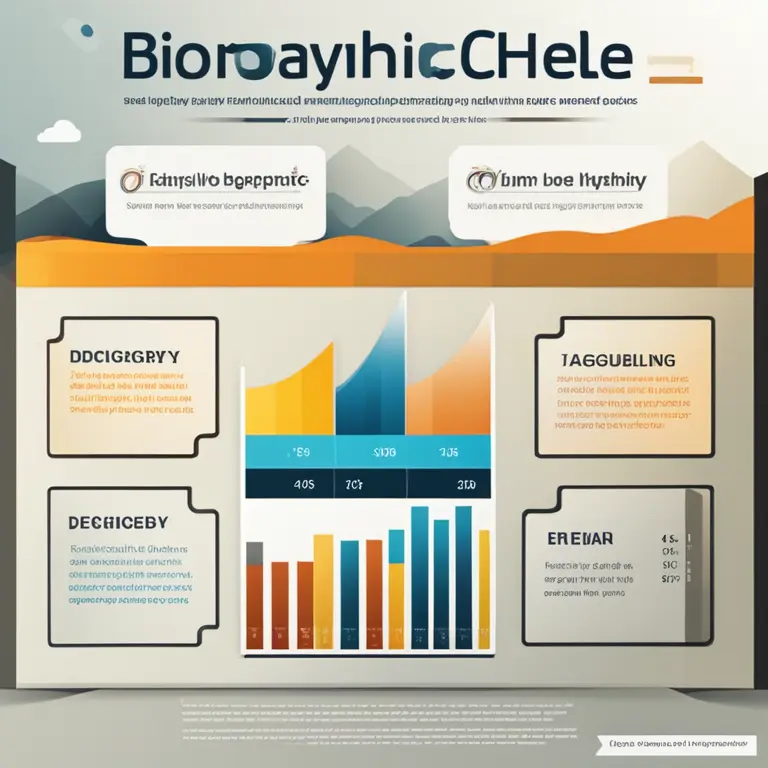
The Mechanics of Biorhythms: Personal Energy Cycles
Discover how biorhythms influence our daily lives and personal energy cycles, shaping our emotional, physical, and intellectual states.
article by Adrian Wallace
Introduction to Biorhythms
Biorhythms are a concept in alternative science suggesting that people's lives are affected by rhythmic biological cycles. According to this theory, there are three primary cycles: the Physical, the Emotional, and the Intellectual cycle. Each of these cycles has a different period, and the intersection of these cycles helps determine an individual's performance, emotions, and mental capacity on any given day. The theory of biorhythms dates back to the late 19th and early 20th centuries but has gained periodic interest over the years.

The Origin and History
The concept of biorhythms can be traced back to Dr. Wilhelm Fliess in the late 1800s. Fliess believed in biorhythms that were linked to one’s birth date and had far-reaching implications on health and well-being. His ideas were later expanded upon by other scientists and enthusiasts, resulting in the proposed 23-day physical, 28-day emotional, and 33-day intellectual cycles. These concepts gained popularity in the 1970s and continue to be examined by those interested in alternative biofeedback modalities.
Physical Cycle Dynamics
The Physical cycle, lasting 23 days, is thought to influence one's strength, endurance, and vitality. When the cycle starts, individuals might feel more energetic and physically resilient. As the cycle reaches its midpoint, this energy is believed to peak, whereas energy levels purportedly decline as the cycle wanes, leading to a period of rest and recovery before the cycle restarts.
Emotional Cycle Insights
Spanning 28 days, the Emotional cycle relates to mood, creativity, and affectivity. Similar to the Physical cycle, individuals may start feeling optimistic and emotionally stable, reaching a peak of emotional positivity before the cycle descends. At the cycle's low point, individuals might experience a period of emotional sensitivity or moodiness before going through an upward emotional trajectory again.
Deciphering the Intellectual Cycle
The Intellectual cycle, with a duration of 33 days, is said to govern cognition, alertness, and analytical abilities. As the cycle progresses, one's mental faculties are proposed to sharpen, leading to a flow state of clarity. Following the acme, there gradually comes a time for intellectual reflection before the renewed pursuit of mental acuity as the cycle restarts.
Synchronicity and Compatibility
In the context of 2024 and beyond, synching with biorhythms can provide intriguing insights for personal planning and relationships. Compatibility testing, a trend on the rise, involves matching one’s biorhythm with potential partners or teams to predict synergy and conflict periods. Recognizing these cycles could be beneficial in navigating both personal and professional relationships.
The Skeptics’ View and the Modern Take
While many find value in following biorhythms, it's important to acknowledge the skeptics who question the empirical evidence behind these cyclic patterns. Science demands rigorous proof, and biorhythms, like many other fields of esoteric knowledge, have faced criticism. Despite this, a contemporary approach views biorhythms as a tool for mindfulness and self-awareness rather than an absolute predictor of behavior and capability.
Published: 1/30/2024
Modified: 1/30/2024
More predictions
Come back here soon to learn more about yourself and your future


The Rhythms Within: Mastering Biorhythm Readings
Discover how biorhythm readings provide insights into your physical, emotional, and intellectual cycles, helping you to align with your natural rhythms for improved well-being.


The Rhythms of You: A Guide to Biorhythm Theory
Discover the foundations of biorhythm theory and how it purports to map the cycles of physical, emotional, and intellectual energy in our lives.


The Essence of Biorhythms: Physical, Emotional, and Intellectual Cycles
Discover the science of biorhythms and understand how they influence physical, emotional, and intellectual states throughout our lives.